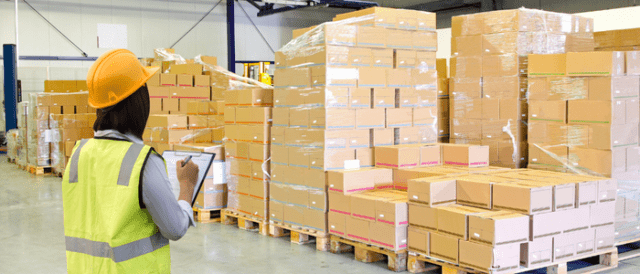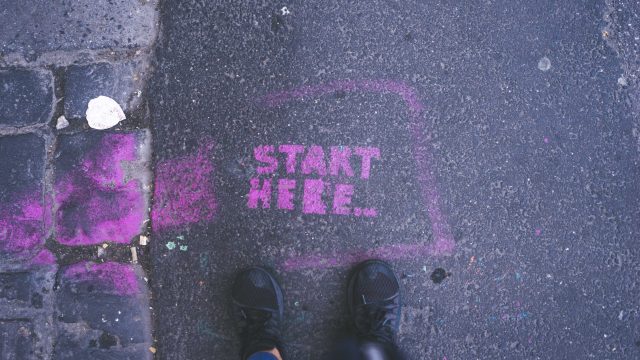Amazon FBA and dropshipping are two extremely popular ecommerce models, and either can be a very profitable way to run your business. Each has their own advantages and disadvantages, but which is right for you? In this article we’re going to explore Amazon FBA vs dropshipping, and which model you should explore when running your own ecommerce business.

Amazon FBA offers sellers the opportunity to leverage the power of the world’s largest online marketplace. With FBA, sellers can store their products in an Amazon warehouse, allowing for quick and efficient shipping to customers. This means less hassle for sellers, as Amazon takes care of storage, packaging, and shipping. Plus, with Amazon’s vast customer base and reputation, sellers can tap into a ready-made audience, boosting their sales potential.
On the other hand, we have the Dropshipping model, a nimble, flexible and relatively low-risk business model that has been popular for many years. With Dropshipping, sellers don’t need to hold inventory or worry about fulfillment. Instead, they partner with suppliers who handle the storage and shipping of products directly to customers. This allows for a low barrier to entry and the ability to offer a wide range of products without the need for upfront investment.
We’re going to dive deep into the pros and cons of both Amazon FBA and Dropshipping, helping you make an informed decision on which model suits your e-commerce ambitions. So, whether you’re a seasoned entrepreneur or just starting out, get ready for an exciting showdown as we unveil the strengths and weaknesses of these two e-commerce business models.
What are the differences between Amazon FBA and dropshipping?
When it comes to the differences between Amazon FBA and dropshipping, there are several key factors to consider. These include inventory management, control over the fulfillment process, profitability, scalability, and ease of entry. Let’s dive deeper into each of these aspects to help you understand which model may be the right fit for your e-commerce business.
Upfront investment
One of the key differences between Amazon FBA and Dropshipping is the initial investment required to start your business, selling through Amazon FBA requires an upfront investment as sellers need to purchase products and send them to Amazon’s fulfillment centers before making any sales. This can be a significant financial commitment, especially for new businesses.
Dropshipping, on the other hand, has a low barrier to entry as it doesn’t require upfront investment in inventory. Sellers only pay for the products once they receive orders from customers. This makes dropshipping an attractive option for entrepreneurs with limited capital.
Inventory management
One of the main distinctions between Amazon FBA and dropshipping is how inventory is managed. With Amazon FBA, sellers are responsible for sourcing and shipping their products to Amazon’s warehouses. Once the inventory is received, Amazon takes care of storage, packaging, and shipping to customers. This means sellers need to invest in inventory upfront and manage stock levels to ensure a steady supply.
On the other hand, dropshipping eliminates the need for inventory management altogether. Sellers partner with suppliers who hold the inventory and handle the fulfillment process. When a customer places an order, the supplier ships the product directly to the customer. This allows for a more hands-off approach to inventory management, as sellers don’t need to worry about stocking and storing products.
Control over fulfillment
Another significant difference between Amazon FBA and dropshipping is the level of control sellers have over the fulfillment process. With Amazon FBA, sellers are able to give control to Amazon of the complete fulfillment process, letting them handle packaging, shipping, and customer service. This is great for sellers who want to focus on other aspects of their business, whilst knowing their customers will benefit from Amazon’s reliable and fast fulfillment service.
In contrast, dropshipping gives sellers less control over the fulfillment process. Since sellers have to work directly with suppliers, they can communicate specific packaging requirements, but they rely on the supplier to fulfill these requirements. However, it’s important to note that sellers still rely on suppliers to fulfill orders promptly and maintain product quality.
Profitability
Profitability is a crucial factor to consider when choosing between Amazon FBA and dropshipping. With Amazon FBA, sellers typically have higher profit margins per sale compared to dropshipping. This is because sellers can purchase products in bulk at wholesale prices or through other product sourcing methods such as retail arbitrage and benefit from Amazon’s shipping rates, which are often lower than individual sellers can negotiate.
Dropshipping may have lower profit margins due to the higher product costs associated with sourcing products from suppliers. Additionally, dropshipping sellers may face increased competition, as the barrier to entry is relatively low, leading to potential price wars and reduced exclusivity within that product category.
Costs and fees
Costs and fees are another crucial factor to consider when comparing Amazon FBA and dropshipping. With Amazon FBA, sellers are required to pay fees for storage, packaging, and shipping services provided by Amazon. These fees can vary depending on factors such as product size, weight, and storage duration. Additionally, sellers may also incur fees for listing products on Amazon’s marketplace.
In contrast, dropshipping typically has lower upfront costs, as sellers don’t need to invest in inventory. However, dropshipping may involve higher product costs, as sellers rely on suppliers who handle storage and shipping. It’s important to carefully analyze the costs and fees associated with each model to determine which is more financially viable for your business.
Control over the customer experience
Another significant difference between Amazon FBA and dropshipping is the level of control over the customer experience. With Amazon FBA, sellers will usually have purchased their products in advance, so they understand that the products are of good quality and will not contain branding which may breach Amazon’s dropshipping guidelines. This means FBA is not only convenient for the seller, but they know the customer will be getting the best experience possible. .
On the other hand, dropshipping relinquishes control of the customer experience to the supplier, who is in control of the product quality, branding and fulfillment of the customer order.. They can work directly with suppliers to ensure that products are packaged and shipped according to their specifications. This gives sellers the opportunity to build their brand and provide a unique customer experience.
The advantages and disadvantages of dropshipping and Amazon FBA
Before you decide whether dropshipping or Amazon FBA is the better choice for you, you need to understand the advantages and disadvantages of both. We’ve summarized some of the key things you need to know before you make your decision.
Advantages of Amazon FBA
- Wide customer reach: Selling on Amazon gives you access to millions of potential customers worldwide. Amazon’s reputation and customer base can help drive sales and increase visibility for your products.
- Prime eligibility: By using FBA, your products become eligible for Amazon Prime, which can attract more customers who value fast and free shipping.
- Logistics support: Amazon takes care of the entire fulfillment process, including packaging, shipping, and customer service. This allows you to focus on other aspects of your business, such as product sourcing and marketing.
- Trust and credibility: Selling through Amazon FBA can enhance your brand’s credibility, as customers trust the Amazon platform and its fulfillment services.
Disadvantages of Amazon FBA
- Fees and costs: While Amazon FBA provides convenience, it comes with fees and costs. These include storage fees, fulfillment fees, and referral fees, which can eat into your profit margins.
- Limited control: With Amazon FBA, you have less control over the fulfillment process, packaging, and customer service. This can impact the customer experience and brand perception.
- Competition: Selling on Amazon means competing with other sellers on the same platform. It can be challenging to stand out among the vast number of products available, especially in popular categories.
Advantages of dropshipping
- Low startup costs: Dropshipping requires minimal upfront investment, as you don’t need to purchase inventory in advance. This makes it an attractive option for entrepreneurs with limited capital.
- Flexibility and scalability: Dropshipping allows you to test different products and niches without the risk of holding inventory. It also offers the flexibility to scale your business quickly, as you can add new products or suppliers easily.
- Location independence: Since you don’t need to handle inventory or manage a physical warehouse, dropshipping can be done from anywhere with an internet connection. This provides freedom and flexibility for digital nomads or those looking for a remote business opportunity.
Disadvantages of dropshipping
- Lower profit margins: Very often, suppliers will not be prepared to offer a reduction on their prices for you to make a profit – especially if you are starting out. This can result in lower profit margins compared to buying in bulk at wholesale prices, or finding clearance products that can be resold.
- Supplier issues: Relying on suppliers for product fulfillment means you’re dependent on their reliability and quality. If a supplier fails to deliver on time or provides subpar products, it can negatively impact your business and customer satisfaction.
- Increased competition: The low barrier to entry in dropshipping can lead to a saturated market
How easy is it to start and scale a dropship vs Amazon FBA business?
Scalability is an important factor to consider when choosing an e-commerce business model. Both Amazon FBA and dropshipping offer different levels of scalability, depending on the goals and resources of the seller.
Amazon FBA provides a high level of scalability due to its extensive fulfillment network and the massive customer base on the platform. Sellers can leverage Amazon’s infrastructure to handle the logistics of storing, packaging, and shipping products, allowing them to focus on scaling their business. With Amazon’s Prime eligibility, sellers can tap into a large pool of loyal customers who value fast and free shipping. Additionally, Amazon’s marketplace offers exposure to millions of potential customers, increasing the scalability potential for sellers.
On the other hand, dropshipping also offers scalability, albeit with some limitations. Since sellers don’t need to invest in inventory upfront, they can quickly add or remove products from their online store, adapting to market trends and customer demands. This flexibility allows for easy scalability as sellers can expand their product catalog without the need for physical storage space. However, dropshipping scalability may be limited by the availability and reliability of suppliers. If a seller relies on a single supplier and that supplier cannot meet increased demand, it can hinder scalability.
When it comes to ease of entry, dropshipping has a clear advantage. With minimal upfront investment required, dropshipping allows entrepreneurs with limited capital to start an ecommerce business. Sellers can partner with suppliers who handle the fulfillment process, eliminating the need for inventory management. This low barrier to entry makes dropshipping an attractive option for beginners or those looking to test the waters of e-commerce.
However, it’s important to note that dropshipping does come with its own challenges. Sellers need to carefully select reliable suppliers and manage relationships to ensure timely fulfillment and product quality. Additionally, dropshipping sellers may face increased competition due to the low barrier to entry, potentially leading to price wars and reduced profitability.
For those looking for an alternative to dropshipping, retail arbitrage can be a viable option. Retail arbitrage involves sourcing products from retail stores at a lower price and reselling them at a higher price on platforms like Amazon. This method requires more upfront investment and physical inventory management but offers the potential for higher profit margins and more control over the sourcing process.
Both Amazon FBA and dropshipping offer scalability and ease of entry, but with different considerations. Amazon FBA provides a robust infrastructure and access to a large customer base.
Which is more profitable – Amazon FBA or dropshipping?
When it comes to profitability, there is no definitive answer as to whether Amazon FBA or dropshipping is more profitable. The profitability of each model depends on various factors, including the product niche, pricing strategy, competition, and the seller’s ability to effectively manage their business.
Amazon FBA can offer higher profit margins per sale compared to dropshipping. This is because sellers can purchase products in bulk at wholesale prices and benefit from Amazon’s shipping rates, which are often lower than individual sellers can negotiate. Additionally, by leveraging Amazon’s extensive customer base and Prime eligibility, sellers can attract more customers and increase sales, leading to higher profits.
On the other hand, dropshipping may have lower profit margins due to the higher product costs associated with sourcing products from suppliers. Sellers often need to pay a higher price for individual products, reducing their profit margins. Additionally, dropshipping sellers may face increased competition, as the barrier to entry is relatively low. This can lead to price wars and reduced profitability.
However, it’s important to note that profitability is not solely determined by the business model itself. The success and profitability of an e-commerce business depend on various factors, including the seller’s marketing strategies, product selection, pricing, and customer service. Both Amazon FBA and dropshipping can be profitable if executed effectively and with careful consideration of these factors.
Ultimately, the profitability of Amazon FBA or dropshipping will vary from seller to seller. It’s essential for entrepreneurs to thoroughly research and analyze their target market, competition, and profit potential before deciding which model to pursue. Additionally, continuously monitoring and optimizing the business strategy can help maximize profitability in either model.
What are some alternatives to dropshipping?
While dropshipping is a popular e-commerce business model, it may not be the right fit for everyone. If you’re looking for alternatives to dropshipping, here are a few options to consider:
Wholesale
Instead of relying on individual suppliers for each product, you can establish relationships with wholesale distributors. Wholesale allows you to purchase products in bulk at discounted prices, giving you higher profit margins compared to dropshipping. With wholesale, you have more control over the sourcing process and can ensure product quality and consistency.
Private labeling
Private labeling involves sourcing generic products from manufacturers and branding them with your own label or logo. This allows you to create a unique product line and build your brand. Private labeling offers more control over product quality and pricing, as well as the ability to differentiate yourself from competitors. However, it requires more upfront investment and involves managing inventory and fulfillment.
Print-on-demand
If you’re interested in selling customized or personalized products, print-on-demand can be a viable alternative to dropshipping. Print-on-demand services allow you to create and sell products such as t-shirts, mugs, and phone cases with your own designs. When a customer places an order, the product is printed and shipped directly to them. This eliminates the need for inventory management and allows for greater flexibility in product offerings.
Online arbitrage
Online arbitrage involves sourcing products from online or physical retail stores at discounted prices and reselling them for a profit. This method requires careful research and scouting for sales, clearance items, and seasonal promotions. Retail arbitrage can be a profitable alternative to dropshipping, as it offers higher profit margins and more control over the sourcing process.
One of the best tools for online arbitrage is SourceMogul – and we offer a 7 day free trial of the software if online arbitrage is something you want to try out.
It’s important to consider your business goals, resources, and preferences when choosing an alternative to dropshipping. Each option has its own advantages and disadvantages, so it’s crucial to conduct thorough research and evaluate which model aligns best with your e-commerce business.
Wrapping up
Both models have their clear advantages and disadvantages. Amazon FBA allows you to leverage Amazon’s massive customer base and reputation to make more sales. However, the startup costs can be quite high, especially for solo entrepreneurs. This is where dropshipping may make more commercial sense. To summarize, let’s have a look at the pros and cons of Amazon FBA and dropshipping.
Amazon FBA Pros
- Convenience – Extensive fulfillment network meaning you have a wider range of shipping options
- Using FBA gives you Prime eligibility, so you stand more chance of competing in crowded markets and seem more trustworthy as a seller
- Amazon handle the customer service support allowing you to focus on growing your business
- Without worrying about fulfillment, you can spend more time sourcing products and marketing them
- You can more easily find cheaper inventory items, through methods like retail arbitrage.
Amazon FBA Cons
- There can be higher costs, due to fulfillment fees and upfront stock purchases
- You may find there is more competition in specific areas, particularly gated categories
- You rely on Amazon to handle your shipping and customer service, which could mean you have less control over returns etc.
Dropshipping Pros
- There are low startup costs because you don’t have to rely on buying stock upfront
- You can choose which products you want to stock by approaching suppliers directly
- You can easily switch between the types of products you want to sell because you’re not tied to physical inventory items.
Dropshipping Cons
- You can have lower profit margins because you can be tied to paying standard retail prices from the supplier.
- You rely on a third party supplier for order fulfillment, if they do this badly you as the seller take the risk, which can affect your seller rating.
- You have no method of quality control over the products you sell as they come straight from a third-party.
- You have to handle the customer service or returns yourself, meaning you can spend less time growing your business.
- You could end up getting your seller’s account suspended. Amazon has very strict guidelines on dropshipping, if you break them you run the risk of having your account suspended or even canceled.
More strategy
-

6 steps to becoming an Amazon seller. No experience needed.
Becoming a successful Amazon seller is easy - the Amazon brand and logo represents…
-

Top tips for success from a new Amazon seller
We've compiled a list of the top tips for new sellers, gathered from a…
-

How to get ungated on Amazon – your guide to Amazon restricted categories
If you’re looking to expand your online arbitrage business, you might find yourself tempted…
-

How to prepare for Amazon Q4 trading
Every year the holiday season seems to come around a little earlier. As an…




